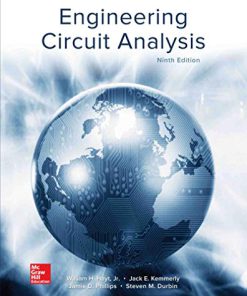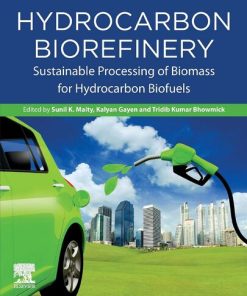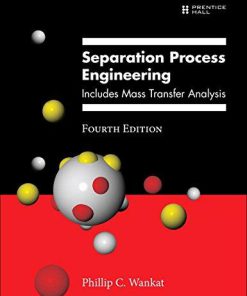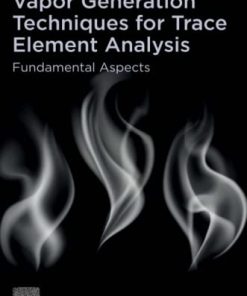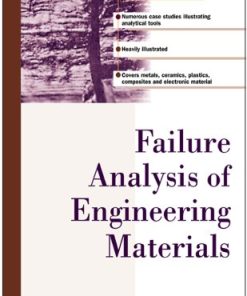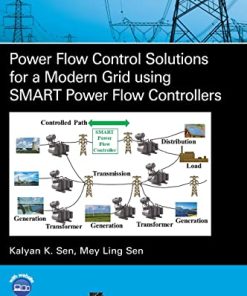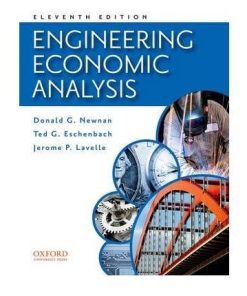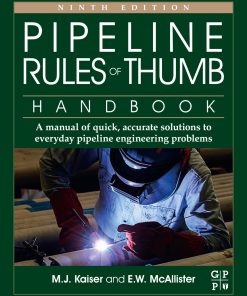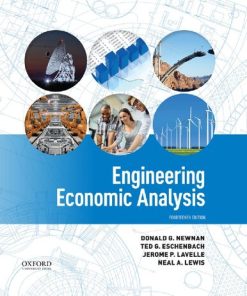(EBook PDF) Flow Analysis for Hydrocarbon Pipeline Engineering 1st edition by Alessandro Terenzi 0128224835 9780128224830 full chapters
$50.00 Original price was: $50.00.$25.00Current price is: $25.00.
Flow Analysis for Hydrocarbon Pipeline Engineering 1st edition by Alessandro Terenzi – Ebook PDF Instant Download/DeliveryISBN: 0128224835, 9780128224830
Full download Flow Analysis for Hydrocarbon Pipeline Engineering 1st edition after payment.
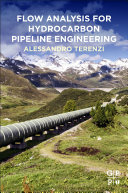
Product details:
ISBN-10 : 0128224835
ISBN-13 : 9780128224830
Author: Alessandro Terenzi
Flow Analysis for Hydrocarbon Pipeline Engineering gives engineers a tool to help them determine fluid dynamics. The book describes hydrocarbon fluid transport in pipelines by presenting useful applied thermodynamic derivations specialized for pipelines. All transport phenomena is covered, such as heat, momentum and mass transport. Moving past the fundamentals, the reference addresses the complexity of these fluids and dedicates a chapter on multiphase mixtures, including slugging, hydrates, wax and sand. Rounding out with practical case studies, this book delivers a critical reference for engineers and flow assurance experts that will help them correlate basic fluid principles with applied engineering practices.
Flow Analysis for Hydrocarbon Pipeline Engineering 1st Table of contents:
CHAPTER ONE. Basics of hydrocarbons thermodynamics
1.1. Introduction
1.2. Equation of state
1.3. Other real fluid properties
1.4. The principle of corresponding states
1.5. Equilibrium and stability of one-component fluids
1.6. Vapor–liquid equilibrium for one-component fluids
1.7. Vapor–liquid equilibrium for multicomponent fluids
1.8. Equation of state for multicomponent mixtures
1.9. Phase diagrams of reservoir fluids
Chapter Two. Steady compressible flow
2.1. Introduction
2.2. 1D flow equations in conservative form
2.3. 1D flow equations for steady adiabatic pipe flow
2.4. The velocity of sound
2.5. Isentropic flow correlations
2.6. Stagnation and critical properties
2.7. Flow in area change regions
2.8. The convergent nozzle
2.9. The convergent-divergent nozzle
2.10. Performance of real flow restriction devices
2.11. Adiabatic flow with friction in a constant area duct
2.12. Real gas pipeline flow properties
Chapter Three. Transient compressible flow
3.1. Introduction
3.2. Small amplitude waves in gases
3.3. High amplitude waves in gases
3.4. Discontinuities and the Riemann problem
3.5. Types of transient operations in pipeline systems
3.6. Examples of blowdown system simulations
Chapter Four. Multiphase gas–liquid flow
4.1. Introduction
4.2. Definitions
4.3. Flow regimes
4.4. Flow pattern map
4.5. Basic equations and models
4.6. Flow regime transitions
4.7. Slug flow
4.8. Pressure drop calculations for two-phase pipelines
4.9. Sound velocity in two-phase fluids
4.10. Design of multiphase pipelines
Chapter Five. Pipeline heat transfer
5.1. Introduction
5.2. Steady state heat transfer in cylindrical geometry
5.3. Steady state external heat transfer modeling—fully buried pipeline
5.4. Steady state external heat transfer modeling—partially buried or exposed pipeline
5.5. Transient external heat transfer modeling—fully buried pipeline
5.6. Insulation and heat tracing
Chapter Six. Flow assurance issues
6.1. Introduction
6.2. Hydrates
6.3. Wax deposition in pipelines
6.4. Asphaltene deposition in pipelines
CHAPTER SEVEN. Flow properties affecting steel pipe material assessment
7.1. Introduction
7.2. Low temperature operation
7.3. Ductile fracture propagation analysis
7.4. Post-Weld Heat Treatment—PWHT
Chapter Eight. Special pipelines
8.1. Introduction
8.2. CO2 pipelines
8.3. H2 pipelines
People also search for Flow Analysis for Hydrocarbon Pipeline Engineering 1st:
oil pipeline engineer salary
what does a pipeline engineer do
hydraulic analysis of pipeline
hydrocarbon pipeline
oil pipeline companies
Tags:
Flow Analysis,Hydrocarbon Pipeline,Engineering,Alessandro Terenzi
You may also like…
Uncategorized
Uncategorized
Uncategorized




